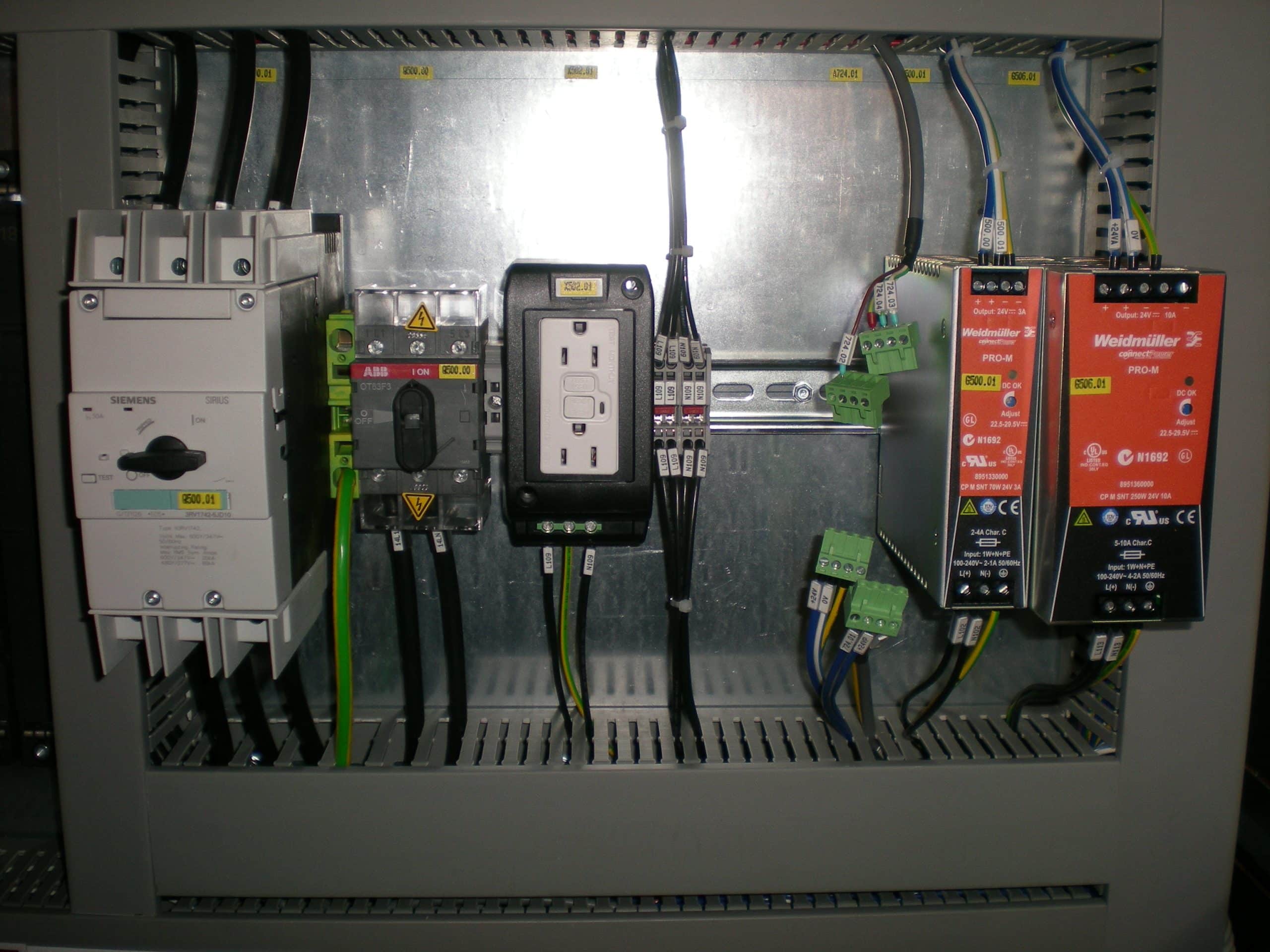Last edit: 19/07/2023

In April 2020 an updated version was released with a few changes summarised hereafter.
• ECBT2 Connectors in Control Circuits; The use of ECBT2 connectors was added to the second edition of UL508A but it allowed these connectors to be used in power circuit only. The updated version allows ECBT2 also in control circuit; 37.1.
• SCCR for EMI Filters in Panels; 36.4.1, 36.5, 47.1.4, 47.1.6, 47.4, SB4.2.1, Table SB4.2
• Sizing of Branch Circuit Protection for Heater Loads; The previous requirements didn’t sufficiently differentiate between fixed electric space heating equipment and other types of heating equipment.
For example, in the new version only one “Exception” is present in 31.6.1, point about sizing requirements a) and b) for fixed electric space heating equipment:
Exception: For heaters used for industrial furnaces, pipelines and vessels or outdoor de-icing and snow melting where the heater is not able to be subdivided into circuits less than 48 amperes, the branch circuit protective device is required to be sized in accordance with 31.6.1(b).
Other changes are in 28.3.2, 28.3.8, 28.3.9, 31.6.3, 31.6.4
• Emergency Stop Devices in Panels; 66.11.3
• Sizing the Feeder: same approach for all Panels; 32.3.1, 66.7.4.
The proposal was to have the same rule for sizing the feeder protection for all Industrial Control Panels, consistent with Article 409.21 and 670.4 of the NEC. This change was requested by GT Engineering back in 2018. It was approved in 2019 after a series of comments and it is now official. That simplifies the calculation and aligns UL 508A with NEC and NFPA 79 criterias.
• SB4.3.3 – Addition of Class CF; Appendix A
• Multiple Disconnect sign; 55.4
• Revision to Section 55 – Markings
• Revision of 31.4.1(c) to correlate with NEC 430.53(C)(1)
• Bus Bar Construction Requirements for 100kA SCCR without testing; 4.5, SB4.2.4, Appendix D. This is an important change for control panels with Bus Bars inside. Table 3.1 was added; the data were taken from table G3.1 of UL 891.
• Door interlocking / Restricted Access to Enclosures; 2.28A, 66.1.2 – 66.1.3.2, 67.4.2, 67.4.3. Finally the interlocking mechanism has been aligned with NPFA 79. Changes are in the pipeline since NFPA 79 will be greatky changed in the 2021 edition regarding this aspect.
• Correction of 700A Class T fuse let-through in Table SB4.2
• Color Coding; Finally the color coding has been rationalised. Hereafter some of the changes:
66.5 Internal wiring – power circuits
66.5.2 Unless other colors have been identified as in 66.5.1.1, the following color coding shall be used throughout the panel:
a) Black – ungrounded ac and dc power circuit conductors; and
b) White, gray or three continuous white stripes on other than green, blue, or orange – grounded ac and dc current-carrying power circuit conductor.
66.9 Internal wiring of control circuit
66.9.1 Unless other colors have been identified as in 66.9.1.1, the following color coding shall be employed for ungrounded control circuit conductors throughout the panel:
a) Red – ungrounded ac control circuits.
b) Blue – ungrounded dc control circuits.
66.9.1.2 Unless other colors have been identified as in 66.9.1.1, the following color coding shall be employed for grounded current carrying control circuit conductors
throughout the panel:a) White or gray or three white stripes on other than green, blue, or orange – grounded ac current-carrying control circuit conductor regardless of voltage.
b) White with blue stripe – grounded dc current-carrying control circuit conductor.
c) White with orange stripe – grounded ac or dc current- carrying conductor of an excepted circuit described in the exception to 66.6.1 that remains energized when main disconnect switch is in the “off” position.66.9.1.3 The color ORANGE shall only be used for ungrounded ac or dc excepted circuits, described in the exception to 66.6.1, that remain energized when the main disconnect is in the “off” position.
All changes are in 29.1.3, 66.5.1.1, 66.5.2, 66.9, 66.9.2.